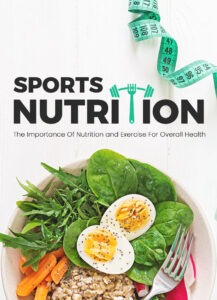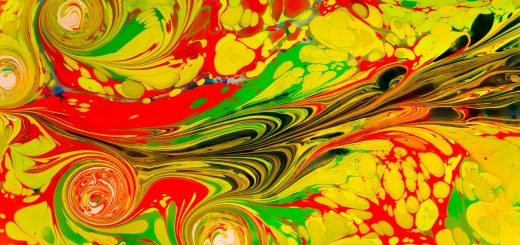How Does the Body Heal After an Injury?

Before diving in, please note: This post is for informational purposes only. If you’d like to know more about how we approach topics, feel free to check out our friendly Disclaimer Page.
Hey there, amazing readers! 🖐️ Just a quick note: yes, we know there are a lot of ads here. Trust us, we get it—it’s not the prettiest look, but they help us keep this blog alive and kicking. Those pesky little ads cover the costs of all the behind-the-scenes magic, from hosting and tech stuff to creating content we hope you’ll love.
We’re committed to delivering quality posts, and your support (even just sticking around despite the ads) means everything to us. So, bear with us, and thanks for helping us keep the good vibes rolling. Now, on to the fun stuff! 😉
TRANSLATE BUTTON AT THE END OF THE ARTICLE
A Quick Overview
Have you ever wondered how your body springs back after an injury?
It’s quite a fascinating process, really!
Our bodies possess remarkable capabilities to heal themselves, navigating through a series of intricate processes that restore us to health.
From a simple bruise to more severe injuries, the healing journey is a mixture of biological responses and personal care.
Let’s dive into the details to understand how our bodies work tirelessly to mend and recover.
Understanding the Body’s Remarkable Healing Powers
Our bodies are equipped with innate healing abilities that can be nothing short of miraculous.
Imagine a cut on your skin; within days, you might find that it has scabbed over and is healing.
This is just one small example.
The human body has a remarkable capacity to repair itself, utilizing various cells, tissues, and biochemical signals that act in concert.
Healing begins at the cellular level.
Cells communicate with one another to direct the healing process, responding to injury signals with precision.
Our body harbors specialized cell types, each playing its role, like a well-rehearsed orchestra.
Blood cells, immune cells, and connective tissue cells all come together in a symphony of repair.
It’s not simply about the physical aspect, either.
Our body’s healing process is influenced by emotional and environmental factors.
Stress, nutrition, and even our mindset can impact how quickly and effectively we heal.
It’s like the mind-body connection is a sturdy bridge, where both sides need to be strong for successful recovery.
As we explore the healing process, we’ll uncover how each stage contributes to getting us back on our feet.
From inflammation to regeneration, it’s a journey worth understanding.
The Healing Process: What Happens Right After an Injury?
In the moments following an injury, there’s a flurry of activity within your body.
It’s like a fire alarm has gone off, signaling for help.
The very first response is often immediate and instinctual.
You might feel pain, swelling, or heat at the injury site; this is your body reacting!
Pain Signals: The nerves around the injury send signals to the brain, alerting us to the damage.
This pain serves as a protective mechanism, urging us to rest and not aggravate the injury further.
Vasoconstriction: Initially, blood vessels constrict to minimize blood loss.
This reaction is akin to shutting the door to prevent further bleeding.
Vasodilation: Shortly after, those same blood vessels widen to allow more blood flow to the area, bringing vital nutrients and immune cells.
It’s like opening the floodgates to welcome help.
Discover "SUPERFOODS: The Key to Health and Balance🥗" 🌿🌺
Swelling: This increased blood flow causes swelling, which is a sign that healing is underway.
Think of it as a protective cushion around the injury.
Formation of a Clot: Platelets in the blood come together to form a clot, sealing off the wound.
This prevents bacteria from entering and further damage from occurring.
Signs of Inflammation: Redness, heat, and pain indicate inflammation.
While uncomfortable, this response is crucial for healing, signaling that your body is hard at work.
Cellular Recruitment: Immune cells mobilize to the site, and this ‘task force’ recognizes and neutralizes any potential threats.
It’s like sending out a search party for any unwelcome intruders.
This early phase is critical and sets the tone for the entire healing journey, emphasizing the importance of immediate care and attention post-injury.
The Role of Inflammation in Starting the Healing Journey
Inflammation often gets a bad rap, but it’s a necessary part of the healing process.
Think of it as the body’s first responder team.
After an injury, inflammatory signals are released, and the area becomes inflamed as immune cells rush to the scene.
Redness and Heat: These are signs that blood flow has increased.
It’s like your body is turning on the heat lamps to keep the injured area warm and promote healing.
Pain Sensation: Pain helps us realize that something is wrong.
It encourages us to rest the injured area, reducing the chances of further injury.
Immune Cell Activity: White blood cells and other immune components are drawn to the site of injury.
They start cleaning up debris and attacking any potential pathogens, like a clean-up crew after a wild party.
While inflammation is essential, it can become problematic if it persists too long.
Chronic inflammation can hinder healing and lead to complications.
Managing this process through rest and care can make a difference, allowing the body to shift into the next healing phase.
How Blood Clots and Scabs Protect the Injury Site
You may have noticed how scrapes form scabs—a protective barrier that’s almost magical!
Blood clotting is a critical step in the healing process.
When you get injured, platelets in your blood rush to the site and begin clumping together, creating a gelatinous plug.
Preventing Blood Loss: This clot serves as a natural barrier, preventing excessive bleeding.
It’s like putting a band-aid on the problem before it gets worse.
Discover "Sports Nutrition: The Importance of Nutrition and Exercise for Overall Health 🥗🏋️"

Scab Formation: As the clot dries, it hardens, forming a scab.
This scab plays a dual role, protecting the wound from bacteria and contaminants while also providing a scaffold for new tissue to grow.
Healing Underneath: While the scab looks hard and unyielding, beneath it, magic happens!
New skin cells start to form, knitting the edges of the wound together.
Removal of the Scab: Eventually, as healing progresses, the scab will fall off naturally, revealing fresh, new skin underneath—like unwrapping a present!
Understanding the role of blood clots and scabs helps us appreciate how our body prioritizes protection and healing after injury.
The Amazing Work of Immune Cells During Healing
Immune cells are the unsung heroes of the healing process.
They’re like the elite task force that swoops in after an injury, ready to tackle any potential threats.
Immediate Response: Neutrophils are often the first immune cells on the scene.
They work to engulf and destroy bacteria and debris, ensuring that infection doesn’t take hold.
Recruitment of Other Cells: Once the initial cleanup is underway, other immune cells like macrophages arrive.
They play a critical role in signaling other immune functions and regulating inflammation.
Tissue Repair: Macrophages also release growth factors that encourage tissue repair.
They’re like the friendly neighbors lending a hand when you need to rebuild your home!
Long-Term Protection: Some immune cells remain in the area long after the injury has healed.
They provide lasting protection against future infections, ensuring your body is always on the lookout.
Coordination with Other Cells: Immune cells interact with fibroblasts and endothelial cells, facilitating the formation of new blood vessels and connective tissue.
Balancing Act: The immune response must be balanced—too much inflammation can hinder healing, while too little can leave the area vulnerable.
This delicate dance is crucial for successful recovery.
The immune system’s efficient operation ensures that our bodies can tackle injuries head-on and emerge stronger.
Tissue Repair: How Cells Rebuild and Regenerate
Once the initial inflammatory response has calmed, the body enters the tissue repair phase, which is where the real magic happens!
Cell Proliferation: Fibroblasts, connective tissue cells, and epithelial cells move in to fill the gap left by the injury.
They multiply and start rebuilding the tissue structure, akin to construction workers on a busy site.
Extracellular Matrix Formation: Fibroblasts produce a scaffolding known as the extracellular matrix.
This matrix provides support for new tissue, like a framework for a building.
Collagen Production: Collagen is a vital protein that helps to strengthen and stabilize the newly formed tissue.
It’s like adding steel beams to ensure the structure’s durability.
Revascularization: New blood vessels form to restore blood flow to the area.
This is crucial for delivering nutrients and oxygen, supporting the healing process.
Wound Contraction: Myofibroblasts help pull the edges of the wound together, minimizing the size of the scar.
It’s like tightening a drawstring bag to keep everything inside secure.
Final Touches: As healing progresses, the new tissue matures and reorganizes, eventually leading to the formation of scar tissue.
While scars may not be as strong as the original tissue, they often serve their purpose quite effectively.
This remodeling phase is vital for restoring function and appearance to the injured area, showcasing the body’s impressive regenerative abilities.
The Importance of Nutrition in the Healing Process
Nourishment plays a pivotal role in healing, almost like fuel for a race car.
What we eat can significantly impact how quickly and efficiently our bodies heal.
Here’s why nutrition matters:
Protein Power: Proteins are essential for tissue repair.
Think of them as the building blocks needed to reconstruct everything damaged.
Chicken, beans, and nuts should be high on your shopping list!
Vitamins and Minerals: Vitamins A, C, D, and E, along with zinc and magnesium, are crucial for healing.
They support immune function, collagen production, and skin health.
Loading up on fruits, vegetables, and whole grains can give your body the support it craves.
Hydration Matters: Staying hydrated is vital for overall health and healing.
Water helps transport nutrients to cells, flushes out toxins, and maintains cellular function.
So drink up!
Anti-inflammatory Foods: Incorporating foods rich in omega-3 fatty acids, such as fish and flaxseeds, can help reduce inflammation.
It’s like throwing a lifeline to your body during the healing phase.
Avoiding Processed Foods: Sugary and processed foods can lead to systemic inflammation.
Steering clear of these options allows your body to focus on healing rather than battling unnecessary inflammation.
Listening to Your Body: Everyone’s nutritional needs may vary.
It’s important to pay attention to how your body responds to different foods.
Finding what nourishes you best can enhance your healing experience.
Good nutrition can accelerate healing, making you feel more energetic and less fatigued.
Rest and Recovery: Why Your Body Needs Time
I can’t stress enough how crucial rest is for recovery.
Just as a car needs time in the shop for repairs, our bodies need downtime to heal properly.
Here’s why:
Energy Conservation: Healing takes up a lot of energy.
Resting allows your body to divert energy from daily activities to the healing process.
Reduced Strain: Moving around too much can aggravate injuries and slow down recovery.
Think of resting as putting on the brakes to avoid further damage.
Sleep Matters: Quality sleep enhances recovery.
During sleep, the body works to repair tissues, regulate hormones, and boost immune function.
It’s when the magic happens!
Mental Recovery: Rest isn’t just physical; emotional recovery is also essential.
Taking time to recuperate relieves stress and anxiety, promoting a healthier mindset.
Listening to Your Body: Everyone has different recovery times.
Learning to listen to what our bodies need can prevent setbacks and ensure a smoother healing journey.
Gradual Return to Activity: When you feel ready to get back into the swing of things, take it slow.
Gradually increasing activity levels allows your body to adapt and prevents re-injury.
Remember, patience is vital!
The more we respect our body’s need for rest, the better equipped it will be to heal.
Physical Therapy: Supporting Your Body’s Healing Efforts
For some injuries, physical therapy can be a game-changer.
This active approach helps to support our body’s natural healing processes, making it a valuable ally in recovery.
Restoration of Movement: Physical therapists work on restoring flexibility and range of motion, helping to get your body back on track.
Strengthening and Stability: Tailored exercises help to strengthen muscles and stabilizing joints to prevent future injuries.
It’s like laying a solid foundation for a house.
Pain Management: Therapists can provide techniques to manage pain, reducing discomfort while promoting healing.
Education: They empower patients with knowledge about their bodies, teaching them about injury prevention techniques and proper body mechanics.
Motivation: Having someone to guide you through the recovery process can be motivating.
They keep you accountable and focused on your healing journey.
Holistic Approach: Physical therapists often consider not just the injury but the whole person.
They look at lifestyle, habits, and even emotional health to support a comprehensive recovery.
Incorporating physical therapy can enhance the healing process, allowing us to regain strength and confidence more quickly after an injury.
Emotional Well-Being and Its Impact on Recovery
Healing isn’t just about physical recovery; our emotions play a significant role too.
Think about how you feel when you’re unwell.
Emotional distress can slow down healing, while a positive outlook can accelerate it.
Stress Effects: High stress levels can lead to inflammation.
When we’re worried or anxious, our bodies may produce more cortisol, which can hinder recovery.
Mental Resilience: Engaging in mindfulness practices, such as meditation or gentle yoga, can help manage stress and promote a sense of inner peace.
Support Systems: Surrounding yourself with positive influences—friends, family, or support groups—can uplift your spirits.
Sharing your journey can lighten the emotional load.
Setting Realistic Expectations: Being aware that healing takes time can help manage frustration.
Celebrate small victories, and remember that progress isn’t always linear.
Enjoyable Activities: Distracting yourself with hobbies you love can elevate your mood.
Whether it’s reading, painting, or gardening, doing things that bring joy can aid emotional healing.
Professional Help: Sometimes, emotional struggles can feel overwhelming.
Speaking with a therapist or counselor can help navigate these feelings effectively.
Recognizing the interplay between physical and emotional health can enhance our overall experience during recovery.
When to Seek Medical Attention for Better Healing
Not every injury is a quick fix, and knowing when to seek medical attention can make a world of difference.
Some signs indicate that it’s time to consult a healthcare professional:
Severe Pain: If pain intensifies rather than subsides, it could indicate a more serious injury that needs evaluation.
Swelling and Bruising: An unusual amount of swelling or bruising can signal a fracture or internal injury.
Don’t ignore these signs!
Infection Signs: Redness, warmth, and pus can indicate infection.
If you observe these symptoms, seek prompt medical assistance.
Loss of Function: If you can’t move the affected area or have significant functionality loss, it’s essential to have it assessed.
Persistent Symptoms: If symptoms continue or worsen after a few days—especially after following basic care—it’s time to reach out for help.
Previous Medical Conditions: If you have underlying health issues, it’s wise to consult a medical professional after an injury—better safe than sorry!
Being proactive about your health is key.
Seeking appropriate care can set you on the path to optimal healing.
Celebrating Your Body’s Resilience: Healing Over Time!
As we wrap up this journey through the healing process, it’s essential to pause and appreciate our bodies’ resilience.
Healing isn’t just a physical feat; it’s a beautiful blend of nature, biology, and self-care.
Recognizing Progress: Every small step counts.
Whether it’s reduced pain or increased mobility, celebrate these victories.
Embracing Scars: Scars tell our stories.
They remind us of the challenges we’ve overcome and the strength we possess.
Cultivating Gratitude: Take a moment to express gratitude for your body and its ability to heal.
Every little ache and pain is a sign of hard work!
Empowering Others: Sharing your healing journey can inspire others.
You never know who might benefit from your story.
Looking Forward: While recovery may take time, the journey often teaches us valuable lessons about patience, resilience, and self-love.
Living Fully: Once healed, embrace life!
Engage in activities you love and savor the experiences that bring you joy.
Healing is a beautiful process, and understanding it can empower us to take charge of our health.
Here’s to our remarkable bodies and their incredible ability to heal!
Conclusion
The healing process is intricate, fascinating, and profoundly personal.
Our bodies are equipped with remarkable mechanisms to respond to injury, and understanding these processes can empower us to take better care of ourselves.
From the initial pain signal to the eventual formation of scar tissue, each phase holds its significance.
By prioritizing rest, nutrition, and emotional well-being, we can support our bodies in their healing journeys.
Whether through professional help or personal care, let’s celebrate our resilience and embrace the beauty of recovery.
Remember, healing is not just about getting back to “normal”; it’s about emerging stronger and wiser from the experience.

The Enlightenment Journey is a remarkable collection of writings authored by a distinguished group of experts in the fields of spirituality, new age, and esoteric knowledge.
This anthology features a diverse assembly of well-experienced authors who bring their profound insights and credible perspectives to the forefront.
Each contributor possesses a wealth of knowledge and wisdom, making them authorities in their respective domains.
Together, they offer readers a transformative journey into the realms of spiritual growth, self-discovery, and esoteric enlightenment.
The Enlightenment Journey is a testament to the collective expertise of these luminaries, providing readers with a rich tapestry of ideas and information to illuminate their spiritual path.
Our Diverse Expertise 🌟
While our primary focus is on spirituality and esotericism, we are equally passionate about exploring a wide range of other topics and niches 🌍📚. Our experienced team is dedicated to delivering high-quality, informative content across various subjects ✨.
To ensure we provide the most accurate and valuable insights, we collaborate with trusted experts in their respective domains 🧑🏫👩🏫. This allows us to offer well-rounded perspectives and knowledge to our readers.
Our blog originally focused on spirituality and metaphysics, but we’ve since expanded to cover a wide range of niches. Don’t worry—we continue to publish a lot of articles on spirituality! Frequently visit our blog to explore our diverse content and stay tuned for more insightful reads.





